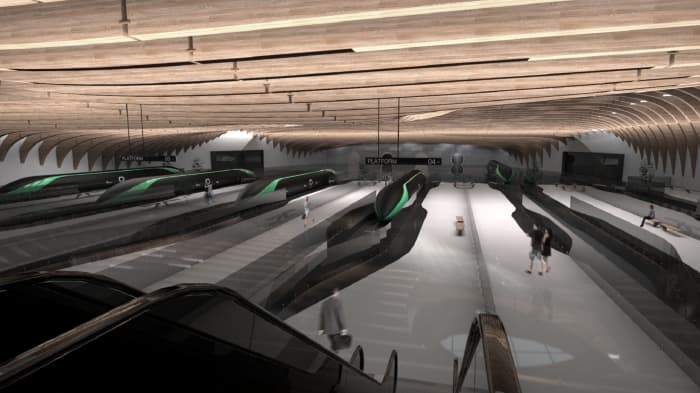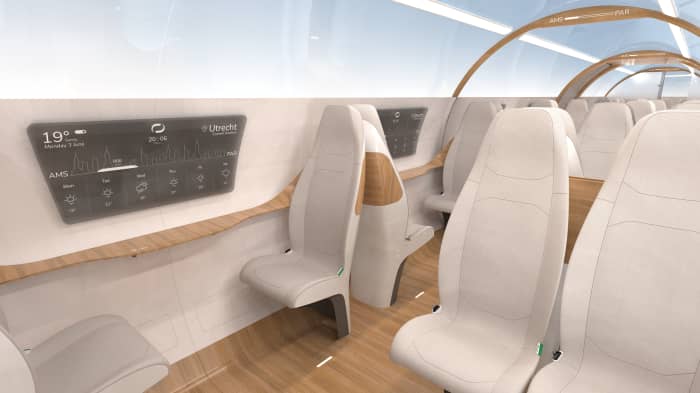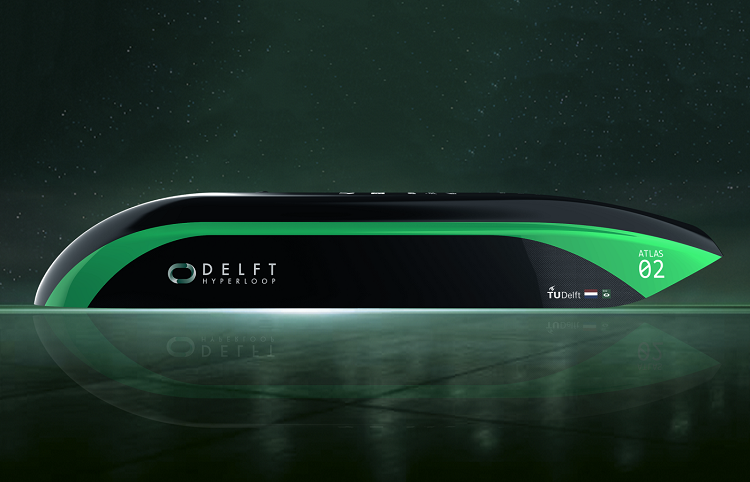It’s anyone’s guess how long it will take for Elon Musk’s Hyperloop dream of an ultra high-speed transit system to become reality. But with SpaceX’s annual Hyperloop Pod Competition taking place on Sunday July 21st — where teams from colleges and universities around the world compete with their prototypes of high-speed transportation pods — at least one group of designers is already offering a conceptual look at what the high-speed system could eventually look like.
A group from the Delft University of Technology in the Netherlands shared its vision for Hyperloop pods, called Atlas 02, and stations that could one day be used to transport passengers long distances at ultra high speeds, with a panoramic concept video showing what the passenger experience would look like.
Take a look.
Concept images show a station with arriving and departing pods…

Source: Delft University / INDG / AltSpace
…as well as the inside of an eventual Hyperloop pod, including stylish seats in a glass-topped pod complete with digital screens displaying the date and weather on what the team envisions would be a 30-minute ride between Amsterdam and Paris (a trip that currently takes over three hours via train).

Source: Delft University / INDG / AltSpace

Source: Delft University / INDG / AltSpace
The pods through move through tubes at hundreds of miles per hours.

Source: Delft University / INDG / AltSpace
Musk unveiled early plans for a multibillion-dollar Hyperloop concept in 2013, with a goal of significantly cutting travel time between major cities. For instance, Musk has said the project could eventually reduce the time for a train trip between San Francisco and Los Angeles from several hours to just 30 minutes. The concept involves sending self-propelled transportation pods through low-pressure vacuum tubes at speeds greater than 700 MPH.
Since then, SpaceX, Musk’s aerospace company, built a test track near its Hawthorne, California headquarters. In 2017, Musk said he ran a test with a Tesla-branded Hyperloop pod that reached a top speed of 220 MPH.
SpaceX has also looked for an open source solution to Musk’s Hyperloop dream, with the company inviting teams of designers and engineers from around the world to submit their ideas for prototypes of the high-speed transportation pods that would one day make a Hyperloop system possible. SpaceX launched its annual Hyperloop Pod Competition in 2015.
The Delft Hyperloop’s team of 40 students worked to design a self-propelled pod that will compete against 20 other college teams from around the world on Sunday with prototype test runs on the SpaceX track, which is roughly one mile long. The Delft Hyperloop team’s goal is to eventually reach a top speed of 1,000 kilometer-per-hour (or, roughly, 620 MPH), though the team that won last year’s SpaceX Hyperloop Pod Competition, from the Technical University of Munich, did so after reaching a top speed of about 290 MPH.
Elon Musk is not the only billionaire working to develop hyperloop technology, as Richard Branson’s Virgin Group partnered with Hyperloop One in 2017 with the goal of opening the first hyperloop to passengers by the “mid-2020s”, the company said in 2018. Virgin Hyperloop One even reportedly reached a top speed of 240 MPH in a 2018 test run.
Meanwhile, Amtrak president Richard Anderson said in 2017 that high-speed hyperloop pods replacing traditional train travel is unlikely to happen anytime soon. “I don’t think it’s realistic right now,” he told CNBC.
Source: https://www.cnbc.com

